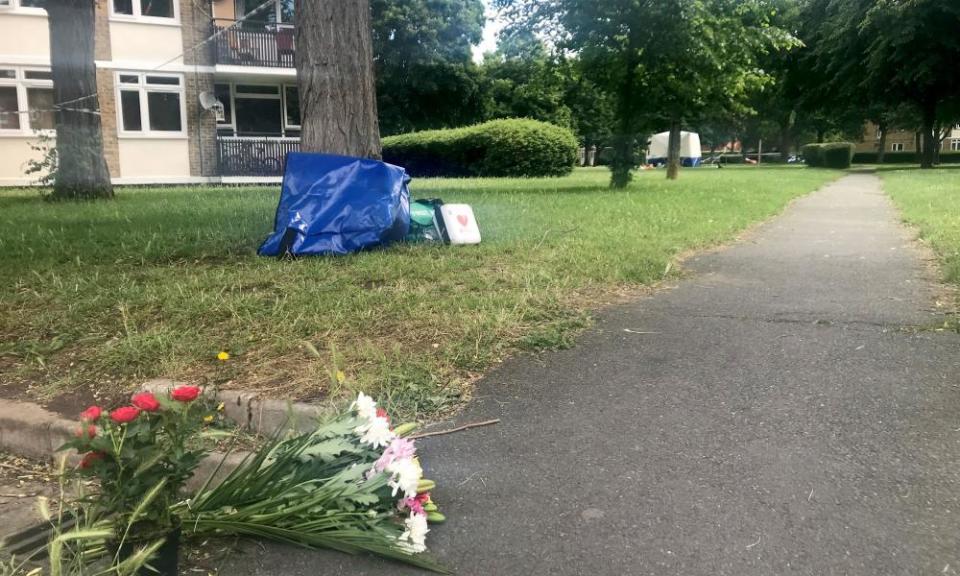Police review teen killings in search of catalyst for spike in murders

Measures are being introduced to try to identify what is driving rising murder rates in the wake of a spike in teenage deaths in some of the UK’s homicide hotspots.
All homicides in London, Birmingham and south Wales will be reviewed by the authorities in an attempt to learn from the chaotic sequences of events that often preempt a death.
Every government agency involved in the victim’s life – health services, local authorities, children’s services, probation, and even voluntary groups – will contribute to an examination of what went wrong and consider how to identify the signs of a life at risk.
Police hope to see patterns that will help to prevent future murders. If the pilot scheme is successful, it will be introduced across England and Wales.
The development comes during a sharp rise in teenage murders and as concern grows that feuds aggravated by Covid lockdowns and months out of education will play out over the summer. Sources from the mayor of London’s violence reduction unit (VRU), which is coordinating the capital’s homicide reviews, say that by examining the murders of older teenagers and by involving children’s services they hope to understand why young people are increasingly drawn into violence.
Watch: Father of teenage victim calls for an end to stabbings in the capital
Lib Peck, director of London’s VRU, said: “It’s absolutely crucial that we learn the lessons now that might help us make a lifesaving intervention in another young person’s life.”
In London, local authorities, NHS London, the probation service, the Association of London Directors of Children’s Services and the Metropolitan police have all signalled support for the scheme, which starts in the autumn. Experts expect social media, drug-dealing activities and whether the victim had been excluded from school or was attending a pupil referral unit will all be relevant.
“Input from children’s services where appropriate will assist with any learning or opportunities for intervention earlier in age,” said a source close to the scheme.
Police intelligence confirms that gangs have targeted pupils out of school for disciplinary reasons or because of coronavirus restrictions – more than one million children in England were out of school in a single week last month for Covid-19-related reasons – a record absence rate.
Serious case reviews investigate when a child dies, or is seriously harmed, “as a result of abuse or neglect” – but these were applied to just five out of 120 recent homicides researched by the capital’s VRU where the victim was under 18, and even fewer where the victim was older. “This was leaving a major gap in our understanding and lost opportunities,” said Peck.
Murder rates in London are now broadly in line with last year’s total of 127 murders; what is causing fresh concern is the proportion of teenage homicides, which has increased from a quarter of that total to around a third. So far, 22 teenagers have been killed in the capital this year compared with 14 in the whole of 2020. The youngest is 14-year-old Fares Maatou who died in April after being attacked in east London.
More widely, the data appears to continue trends observed last year when the number of homicide victims aged between 16 and 24 rose to 142 across the country in the 12 months to March 2020 – an increase of 32 on the previous year.
Police in the West Midlands have made tackling youth violence a top priority after four teenagers were murdered within five months in Birmingham, including Dea-John Reid, 14. Another victim, Keon Lincoln, 15, was shot and stabbed in Handsworth on the afternoon of 21 January. South Wales has also witnessed violent youth crime, with police warning of “teenage boys targeting each other”. In November last year, six people were hospitalised – three of them stabbed – after a “violent incident” in Cardiff city centre.
The former Home Office adviser and director of the National Centre for Gang Research at the University of West London, Simon Harding, said that any attempt to analyse the circumstances of each murder were likely to be positive: “It generates learning, a better understanding. I could see it having a valuable impact for the families but we’d also be able to look at patterns, trends, influencers, triggers.”
Harding said that pre-existing levels of violence caused by alcohol and drug consumption were compounded in regions such as south Wales by the latest development in the violent drugs business model – county lines.
Instead of gangs sending individuals to, say, Cardiff from Manchester, Harding said, they were now recruiting local dealers into their ranks, a development that was causing fresh tensions and violence.

 Yahoo Finance
Yahoo Finance 